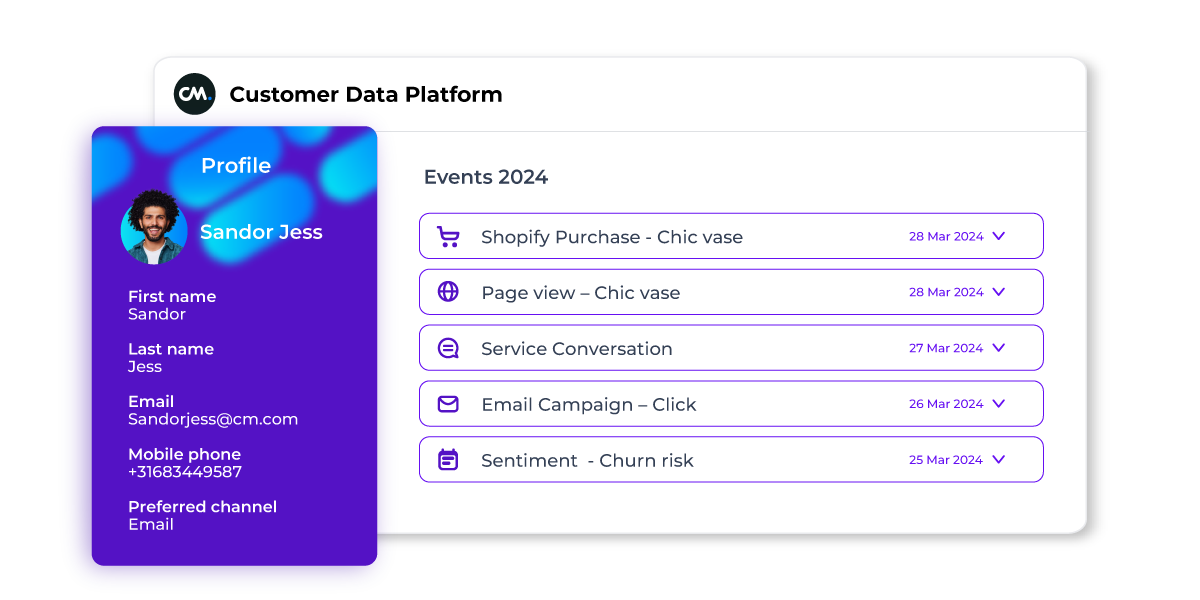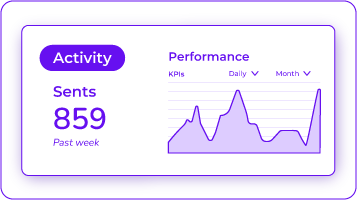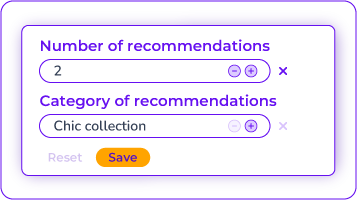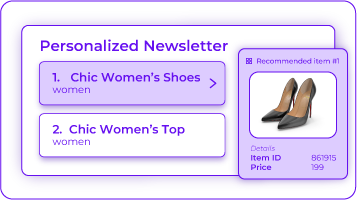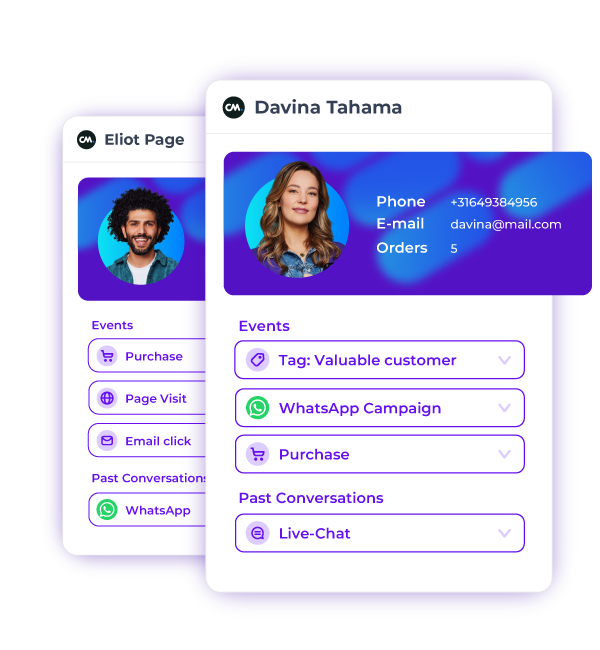
Increase relevance and revenue with personalization at every touchpoint
Easily consolidate exsiting data platforms and remove redundant tools.
Empower employees to access and understand customer data all in one place.
Leverage your own data sources to build a rich understanding of each customer, decreasing dependence on 3rd party cookies. Our Customer Data Platform unifies data across all touchpoints into real-time 360-degree customer profiles, enabling you to nurture strong relationships and drive revenue.
Monitor visitors browsing patterns and merge with the relevant profile when possible.
Integrate first-party data no matter where it’s stored, eliminating dependence on cookies.
Accurately identify and merge data from the same individual into 360° customer profiles.
Enhance customer profiles with AI-driven recommendations, such as predicting behaviour, enabling customer service and marketing to provide truly personalized 1:1 interactions.
Request a demoConnect existing data sources and allow the AI to learn from the start and continuously with every interaction.
Fuel the algorithms with your own business specific context and adjust when necessary to ensure accurate, relevant predictions
Gain transparency and view insights into why certain AI-driven recommendations have been suggested.

Our Customer Data Platform seamlessly integrates with our service and marketing tools to create a unified customer experience and unify data across departments. It effortlessly connects to our Mobile Marketing Cloud, AI Decisioning Engine, Mobile Service Cloud and more.
Select a region to show relevant information. This may change the language.
